The official Starlink router offers limited WiFi range and features. While you can get an aftermarket mesh system to extend connectivity, but it can get a little expensive. A cheaper, yet effective solution is to use a WiFi extender.
But then, the availability of plenty of so-called “best” options will make you scratch your head. That's why, I purchased 17 WiFi extenders that work with Starlink and installed them at several dead spots in my 3,700 Sq Ft 2-story house.
I carefully assessed each option based on factors such as coverage, speeds, consistency, device handling ability, and reliability. After a thorough evaluation, I've identified the top seven options for you to consider in 2025.
| Image | Name | Check Price | Features |
|---|---|---|---|
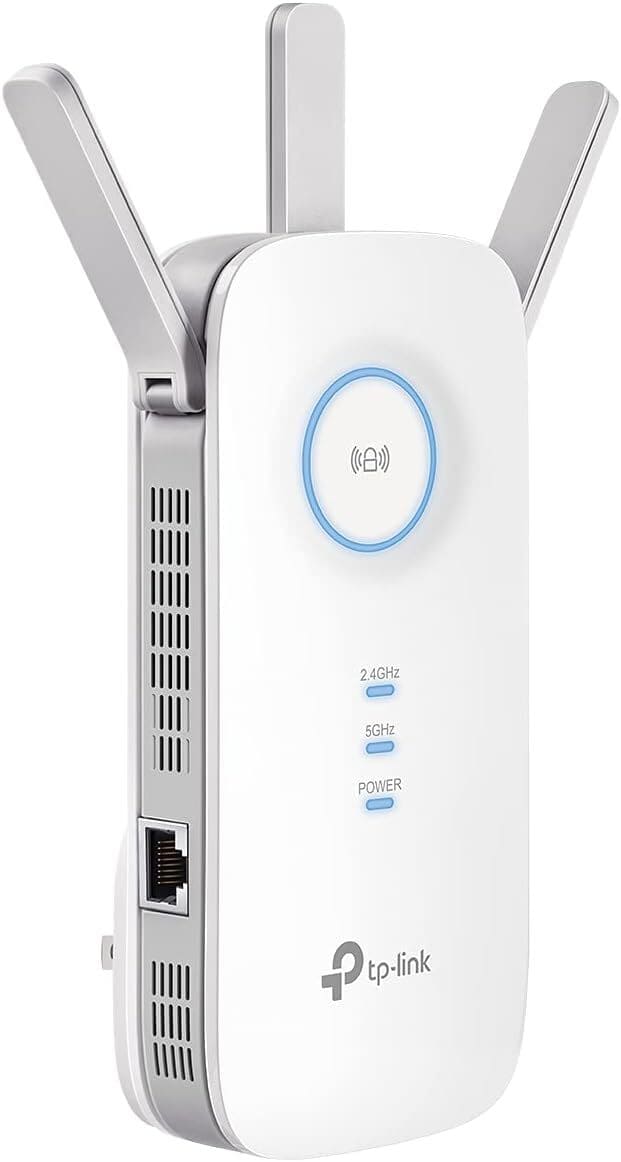 | TP-Link RE550 |
|
|
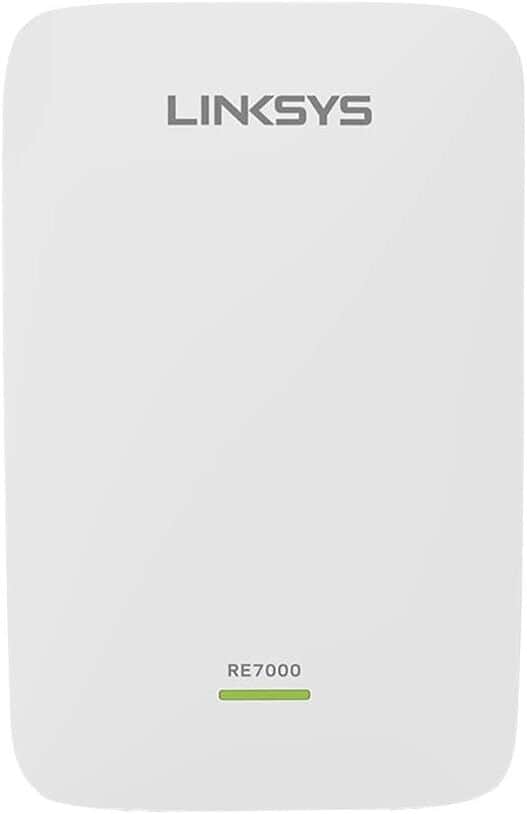 | Linksys RE7350-AMZ |
|
|
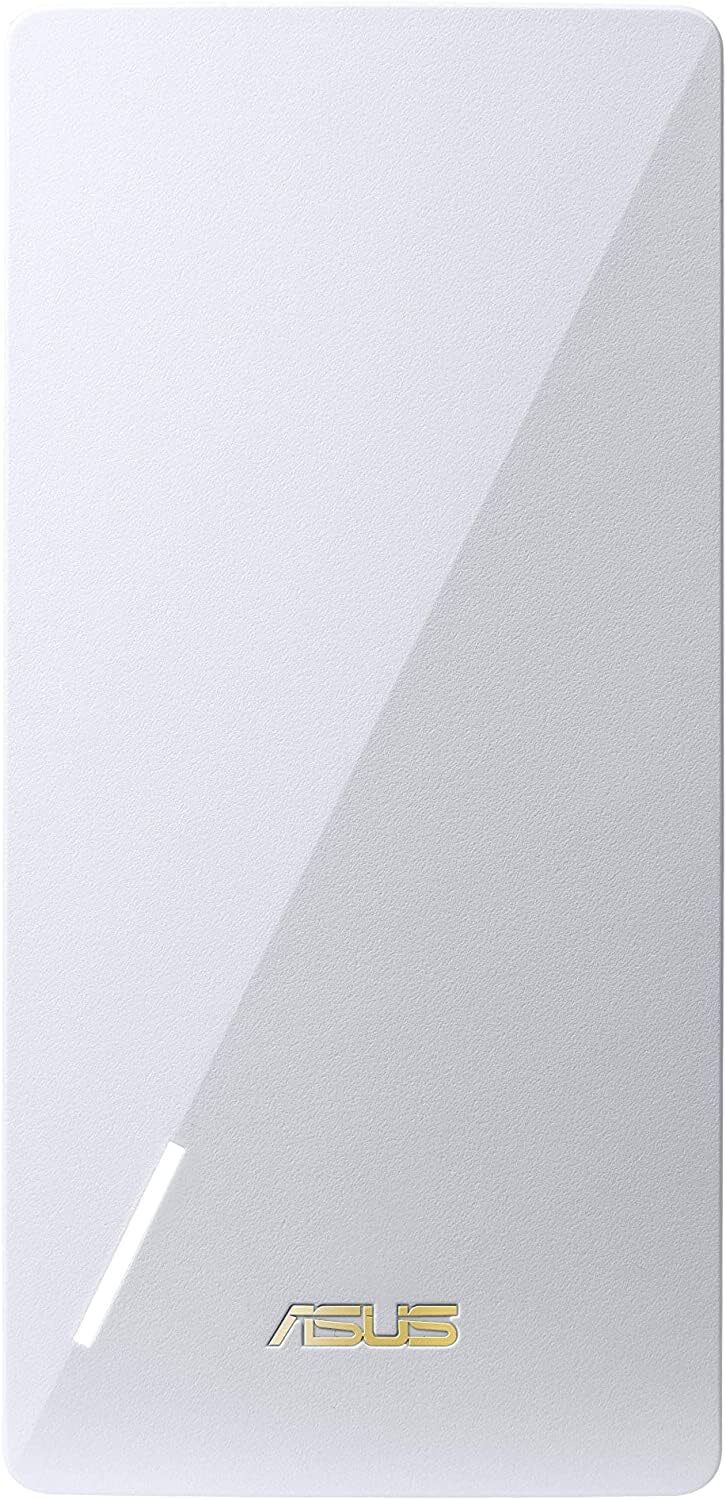 | ASUS RP-AX58 |
|
|
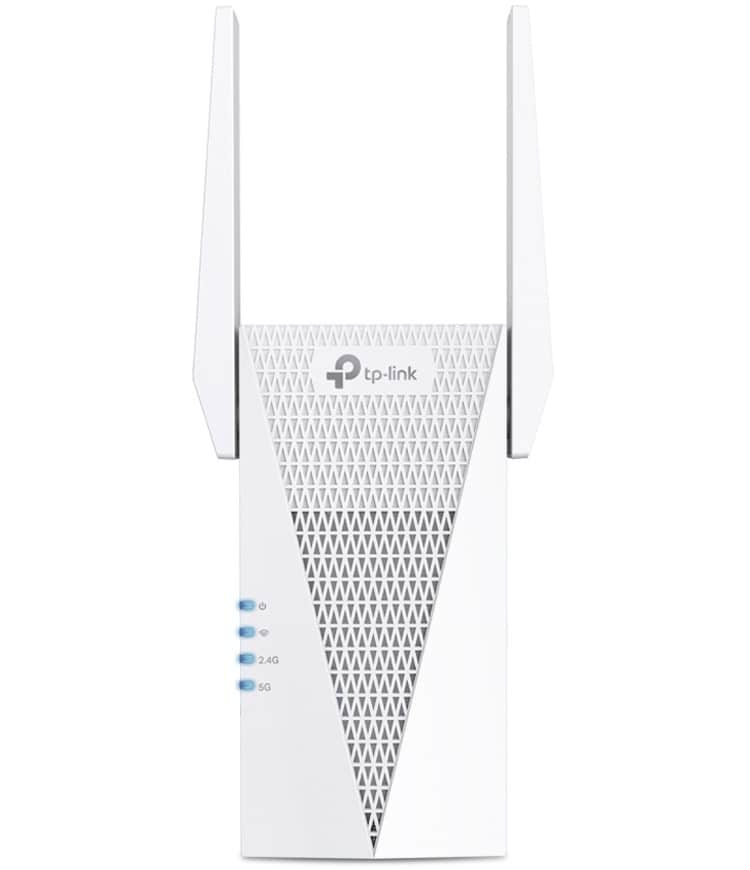 | TP-Link RE715X |
|
|
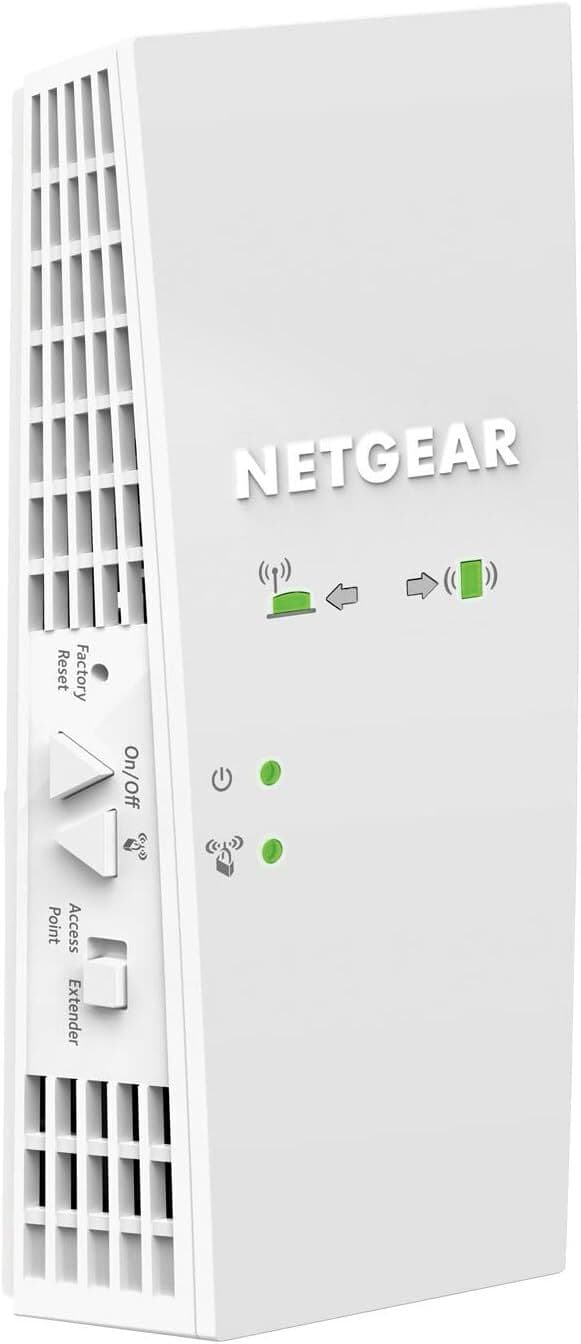 | Netgear EX6400 |
|
|
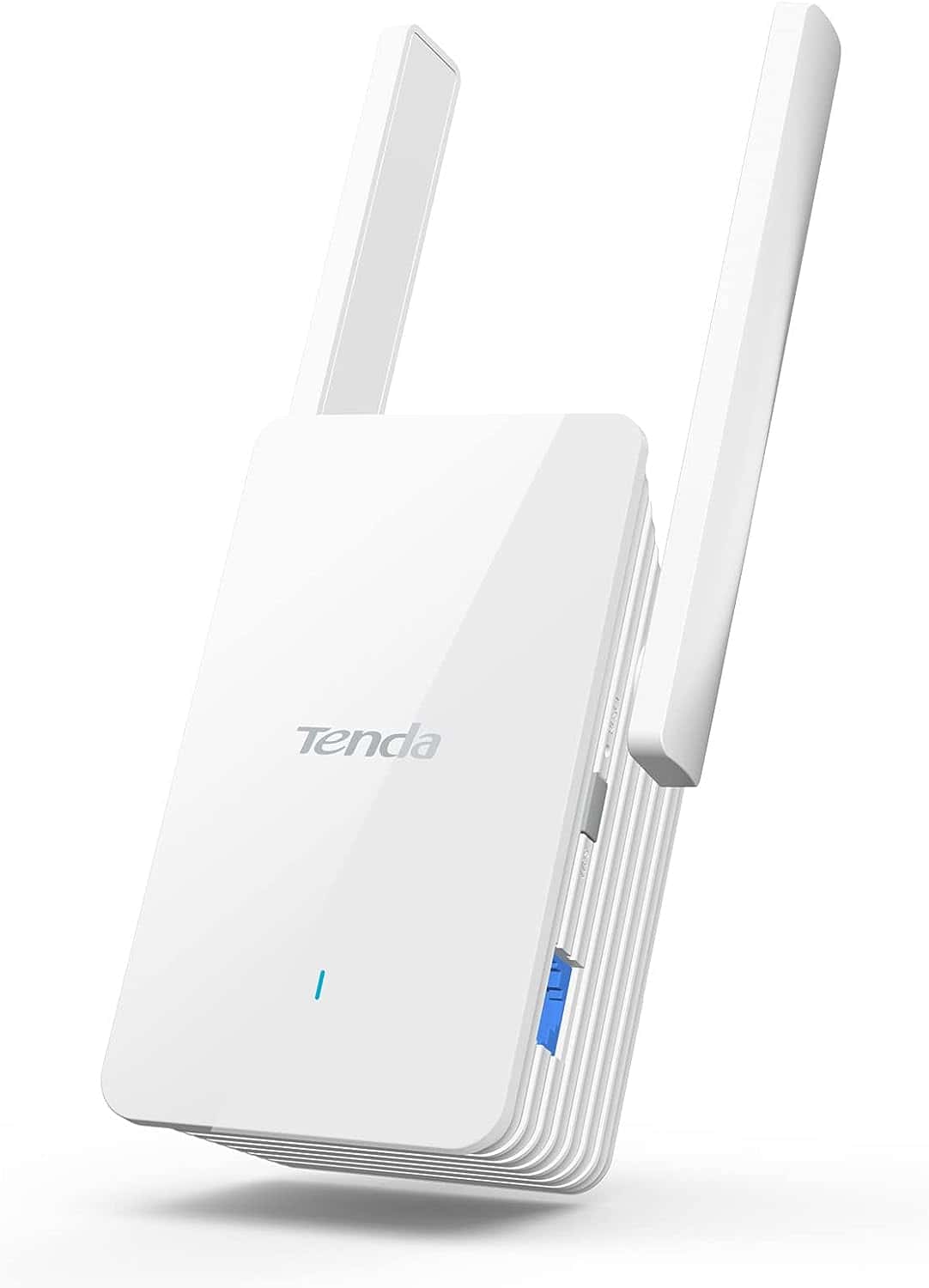 | Tenda A33 |
|
|
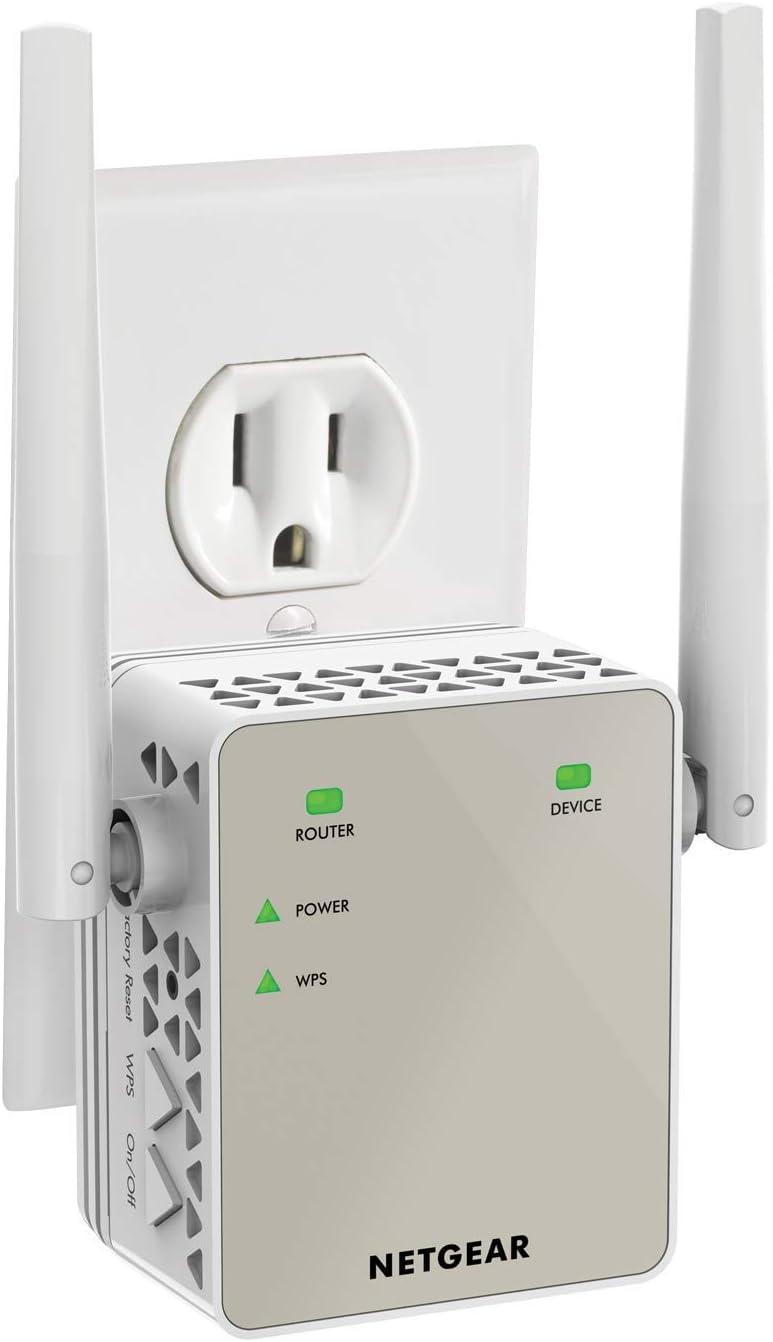
| Netgear EX6120 |
|
Note: You will notice a significant speed drop as extenders repeat the signals over routing them. Mesh WiFi systems, however, route/transmit signals of equal strength throughout the space.
Suggested Read: WiFi mesh vs extender
The following reviews are based on the tests I carried out over the past two months. In the subsequent sections, you will understand what makes me recommend them over other options available in the market.
Also, including only high-end models wouldn’t do justice to people who run on a tight budget. And that’s why you will find devices in each category, including top, mid-range, and budget.
1. Best Overall: TP-Link RE550

- Wireless Standard: Wi-Fi 5 (802.11ac)
- WiFi Range: Up to 2,800 Sq Ft
- Number of Devices: Up to 35
- Ports: 1 x Gig Ethernet
- App Support: Yes
TP-Link RE550, despite coming at around $70, gets you a massive added coverage and lets you use the internet over several devices. This dual-band Wi-Fi 5 device comes with a massive 1900 Mbps speed cap alongside its compatibility with any router, taking it straight to the first position.
Besides, compared to its predecessor, RE450, you’ll find improvements in speed, coverage, and others.
Why is it a suitable choice?
The suitability of this extender with Starlink comes from the huge coverage boost. In my 3,700 Sq Ft large house, the router could barely reach two walls away from it, and the devices in the extremities had one bar signal most of the time.
But installing this extender at weak spots had my devices on five solid bars all the time. Its three antenna setup covered around 2,500 Sq Ft space with ease, and I could enjoy live shows on my Smart TV without it ever buffering or cutting.
Moving on, I was impressed with the device-handling capacity. I could connect 30 devices at a stretch without experiencing any major signal drops. A built-in access point mode with 3×3 MU-MIMO enhances its multiple signal conveyance.
Speeds & Connectivity
You can expect consistency over a large space, as it runs on Wi-Fi 5. It has a throughput capacity of 1900 Mbps, with band-wise speed share as follows:
| 5 GHz: 1300 Mbps | 2.4 GHz: 600 Mbps |
Considering its throughput, it is an ideal choice for Starlink's business plan (500 Mbps) subscribers. The download and upload speeds maxed out at 174 Mbps and 18 Mbps, respectively. I could easily take over graphics-intensive tasks like streaming, gaming, video conferencing, and others.
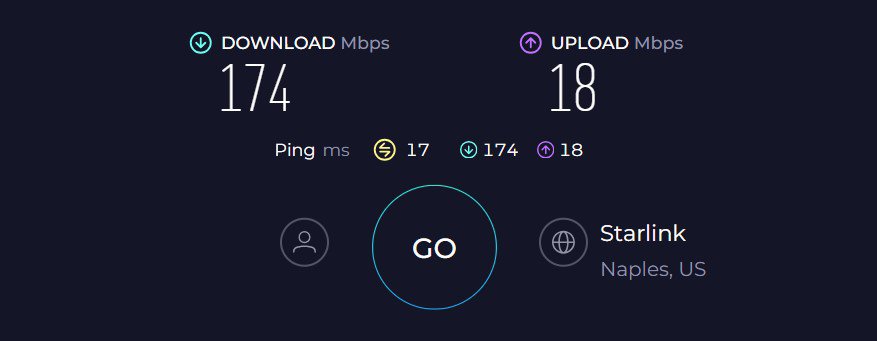
Besides, an Ethernet port with a gigabit speed capacity could top 194 Mbps and 20 Mbps for downloads and uploads. So, you can expect a lag-free connection on your devices.
Conclusion
TP-Link RE550 is the best all-around wireless extender to use with Starlink. Its three antenna setup paired with MU-MIMO enables clean signals to transmit over multiple devices. Besides, there’s a Gigabit Ethernet port for bandwidth-hungry devices.
💵 Pro Tip: Check out these 33 proven ways to save more money this month. Your wallet will thank you!
Pros
- Excellent WiFi range
- Decent speeds
- Stable & quality signals
- Great device-handling capacity
Cons
- No major con
2. Best Runner-Up: Linksys RE7350-AMZ

- Wireless Standard: Wi-Fi 6 (802.11ac)
- WiFi Range: Up to 2,000 Sq Ft
- Number of Devices: Up to 30
- Ports: 1x Gig Ethernet
- App Support: Yes
If your router can’t extend signals outdoors, and the motive behind purchasing an extender is extending WiFi to outbuildings, then Linksys RE7350-AMZ is an ideal pick. It’s one of the first devices with MU-MIMO support to deliver a solid performance and easily fill your WiFi dead zones.
Besides, compared to RE6300, its predecessor, you’ll find improvements in speed, coverage, and connection capacity.
Why is it a suitable choice?
Linksys RE7350-AMZ performed decently well in my range tests and easily breezed through my 2,000 Sq Ft test lab. I took the test up by a notch by trying to connect with the outdoor security cameras, asking my signals to travel around 1,900 Sq Ft from the router. And it was delivered!
Aside from that, the MU-MIMO this device entails is handy when connecting multiple devices at once. The signals were stable on 25 devices used for gaming, streaming, video conferencing, and whatnot.
Speeds & Connectivity
RE7350-AMZ returned mixed results in my throughput tests. Talking about throughput, the total capacity is 1900+ Mbps. The band-wise distribution is as follows:
| 5 GHz: 1733 Mbps | 2.4 GHz: 300 Mbps |
Connected to the Wi-Fi 6 router with a Starlink business plan, the downloads occurred at 161 Mbps, while uploads were valued at 14 Mbps, which is less than my previous recommendation.
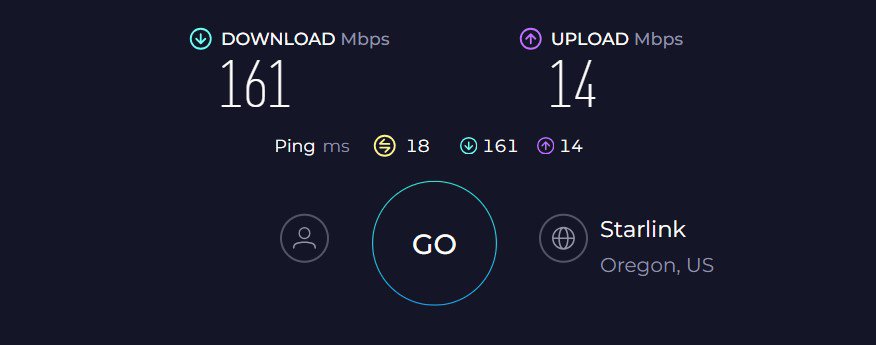
However, the device proved to be a great choice in terms of stability and consistency, as it could handle everything from multiple video meetings to UHD streaming and downloading large files simultaneously.
Moving on, the RE7350-AMZ has one Gigabit Ethernet port for you to establish a seamless and lag-free wired connection. It can serve well for online games like Valorant, Destiny 2, and others requiring throttle-free internet.
Conclusion
This Linksys RE7350-AMZ is a great WiFi extender to have in your space. The throughput scores were decent, and courtesy of MU-MIMO, the signals could stay stable even if sent to multiple devices simultaneously. Its compatibility makes it ideal for a limited user base and thereby ranks second.
Pros
- Decent WiFi range
- Good speeds
- Supports MU-MIMO
- Easy to install
Cons
- Seamless roaming only works with Linksys Max-Stream routers
3. Best for Gaming: ASUS RP-AX58

- Wireless Standard: Wi-Fi 6 (802.11ax)
- WiFi Range: Up to 2,200 Sq Ft
- Number of Devices: Up to 40
- Ports: 1 x Gig Ethernet
- App Support: Yes
The RP-AX58 is an AiMesh extender from a well-known brand, ASUS. It’s a tad different from WiFi repeaters, as the former re-broadcast an existing signal, while the latter connects every device to the central location, and thereby fewer speed drops.
It takes a step ahead of my previous two recommendations with the latest wireless standard, Wi-Fi 6, and device-holding capacity, which translates to its advanced performance. Just so you know, WiFi 6 is 39.13% faster than WiFi 5.
Why is it a suitable choice?
ASUS RP-AX58 passed my week-long stress test without ruffling any feathers, courtesy of two internal antennas.
As a small device, it covers a decent area, and the practical coverage is around 2,000 Sq Ft, so combined with a router, it spreads signals to a lot of open space. And since it’s AiMesh compatible, you can create a single and whole home network that doesn’t require you to switch networks throughout the space.
Moving from one room to another should not affect the quality of signals, and you won’t have to wait for much to stream your favorite shows.
Devices capacity is where you’ll see an upgrade, as signals don’t have to travel back and forth through the same path and rather move directly to the clients. As a result, over 35 devices stay stable and support high-bandwidth tasks like gaming, streaming, etc.
Speeds & Connectivity
This is where the device shows a major difference over the previous two options. Boasting AX3000 speed, the individual band gets a speed share of:
| 5 GHz: 2402 Mbps | 2.4 GHz: 574 Mbps |
As mentioned above, not requiring to travel through the same path means the signal quality isn’t affected, thereby impressive speeds.
The device paired with Starlink's Business plan (500 Mbps) connection clocked download and upload speeds of 158 Mbps and 13 Mbps, respectively.
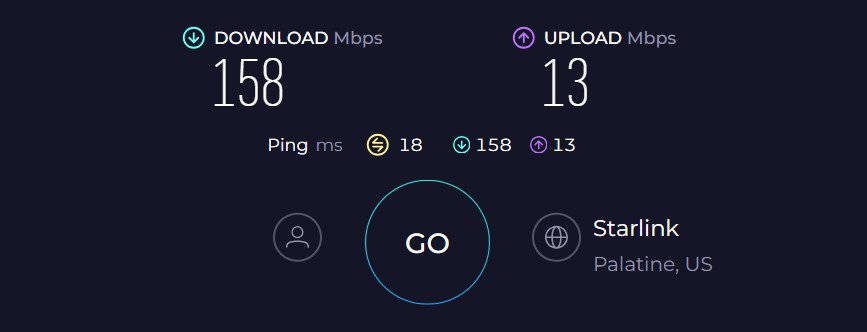
Besides, stability played a major factor in me playing Red Dead Redemption 2 for over six hours at a stretch and not experiencing any throttles.
Furthermore, the device encases an Ethernet port to support download speeds of up to 395 Mbps. This extra Mbps should let me download a high Gig file on my laptop or gaming console much faster and more consistently.
Conclusion
ASUS RP-AX58 is the best WiFi 6 extender that you can get for gaming, streaming, etc. The best part is that speeds don’t drop even at long distances. But a slightly lower range than my previous two picks has pushed it to the third position.
Pros
- Wi-Fi 6 support
- AP (Access Point) mode
- 160 MHz channel
- Classic minimal design
- Excellent throughput
Cons
- A bit lower range
4. Best for Streaming: TP-Link RE715X

- Wireless Standard: Wi-Fi 6 (802.11ax)
- WiFi Range: Up to 1,500 Sq Ft
- Number of Devices: Up to 50
- Ports: 1 x Gig Ethernet
- App Support: Yes
If you're a media consumption enthusiast looking to stream content from different parts of your house, TP-Link RE715X should be your best bet, courtesy of Wi-Fi 6 and OneMesh tech which intelligently connects your devices to extenders or routers, whichever provides the best connection.
And as both share a single name, you stay connected to the network in every room.
Why is it a suitable choice?
Thanks to OneMesh support, the RE715X automatically adapts to the router settings, so you don’t have to worry about setting the extender. Setting it up is much simpler, turn it on, and it automatically detects the available compatible device to connect with.
Range-wise, RE715X offers less when compared to my previous suggestions. At a stretch, it covers an area of around 1,300 Sq Ft. So, pairing it with my staple TP-Link Archer AX90, my backyard couldn't be covered entirely.
But the thing is, the covered area had consistent and reliable signals, and I didn’t have to switch the network when roaming around the house. Plus, OneMesh tech combined with MU-MIMO lets you establish stable connections over multiple devices.
At a stretch, I could connect around 45 devices, where I streamed HD movies, played casual games, attended video calls, and streamed HD music with ease.
Speeds & Connectivity
The RE715X has an aggregated throughput capacity of 3000 Mbps, which is divided in a dual-band WiFi setup as follows:
| 5 GHz: 2402 Mbps | 2.4 GHz: 574 Mbps |
So, RE715X is a viable choice for Starlink business plan users. And pairing the same, I experienced download rates of 151 Mbps, while uploads were recorded at 12 Mbps.
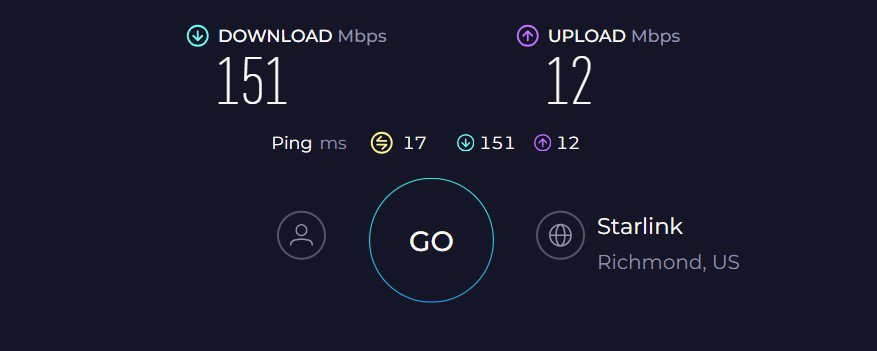
Aside from downloading files in no time, I paired my PS5 and played online matches on FIFA 23 for around an hour at 15ms ping and 60 FPS. Still, there was enough bandwidth left to work on several internet-bound tasks without issues.
Barring its wireless speeds, it also scored eight pointers regarding wired connectivity. Its Gigabit Ethernet port could let you access a few extra Mbps, which should easily satiate your bandwidth-hungry devices.
Conclusion
TP-Link RE715X is a reliable wireless extender to pair with Starlink. It stands out amongst others in terms of its speeds but stays a few steps behind with a lesser coverage value. This is why it’s placed in the fourth position.
Pros
- Wi-Fi 6 support
- OneMesh compatible
- Great throughput capacity
- Decent wireless coverage
- Easy to use
Cons
- No wired backhauling
5. Best Mesh Extender: Netgear EX6400

- Wireless Standard: Wi-Fi 5 (802.11ac)
- WiFi Range: Up to 2,100 Sq Ft
- Number of Devices: Up to 32
- Ports: 1 x Gig Ethernet
- App Support: Yes
Netgear EX6400 creates a powerful mesh network, courtesy of its Mesh smart roaming technology. It automatically connects your devices to the best available bandwidth, making the device different from other extenders compatible with Starlink.
Aside from that, its Wi-Fi 5 standard and decent speed capacity make it an ideal choice for homeowners and corporates.
Why is it a suitable choice?
The EX6400 stands out amongst its competitors by integrating Smart Roaming. Compared to others, they don’t have their speeds dropped and rather keep you connected to the fastest channels available.
Although putting numbers can be tricky, I can say your connections should pan out well within 1,800 Sq Ft. So, with stable connections in place, I could now chill in my garden by putting in HD music and juice in my hand.
Aside from that, with Smart Connect, the EX6400 could handle over 25 devices. It intelligently selects the bandwidth to connect your devices to maximize speed by minimizing interference and congestion. Courtesy of that, multiplayer gaming with my friends went well.
A Nighthawk app lets you manage the connected devices easily and check if any are interfering with the bandwidth.
Speeds & Connectivity
The dual-band Wi-Fi 5 device boasts an aggregated speed of 1900 Mbps, distributed over its dual-band setup as follows:
| 5 GHz: 1300 Mbps | 2.4 GHz: 450 Mbps |
The speeds best suit Starlink Maritime, a 350 Mbps internet plan. The download and upload speeds fared out at 148 Mbps and 12 Mbps, respectively. The speeds might not sound great, but they are enough to get your mid-tier internet tasks done easily.
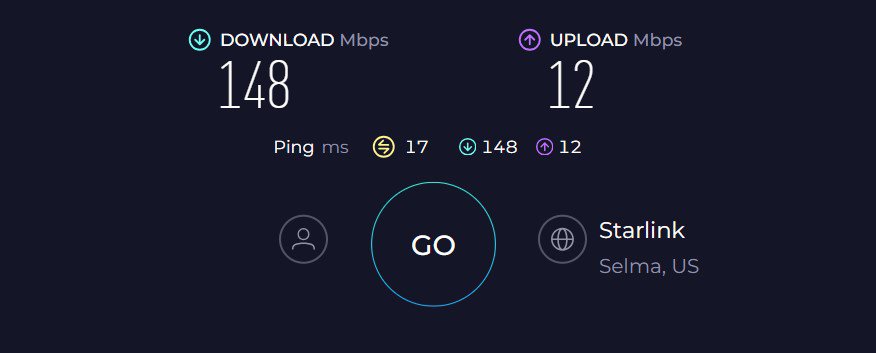
This mesh range extender entails an Ethernet port with which you can connect your wired devices like gaming console, smart TV, Blu-ray player, or streaming player to the network and enjoy an uninterrupted connection.
Despite its excellent speeds, I experienced signal drops in certain areas of my house.
Conclusion
To sum up, Netgear EX6400 is a reliable option to extend your Starlink network. Smart Roaming ensures a seamless and smooth wireless connection when you move from one room to another.
You can’t expect any buffering and delays, and it is easy to install. However, lesser speeds than my previous recommendations have pushed it down.
Pros
- Strong coverage
- Simple setup process
- Good speeds
- Handles multiple devices
Cons
- Network drops in some areas
6. Best Value for Money: Tenda A33

- Wireless Standard: Wi-Fi 6 (802.11ax)
- WiFi Range: Up to 2,100 Sq Ft
- Number of Devices: Up to 25
- Ports: 1 x Gig Ethernet
- App Support: Yes
If you have smart TVs on the outskirts of your house and looking for a good value WiFi extender to satiate their bandwidth needs, Tenda A33 should be your ideal pick.
At just around $70, it entails several handy features like dual-band Wi-Fi 6, a decent throughput capacity, and an Ethernet port which contributes towards its reliable and consistent performance.
Why is it a suitable choice?
Tenda A33 is strategically designed to expand its wireless range, is easy to install, and pairs with any WiFi router.
Its two internal antenna setup ensures your large space never runs out of bandwidth, as it offers decent WiFi coverage of up to 2,000 Sq Ft. Combined with a Tenda AXE6700, my entire kitchen, backyard, and garage were enveloped with strong signals.
But the thing is, despite signals reaching the nooks of a large house, signals might not stay as strong when they pass the extender. So, there were a few inconsistencies here and there on my connections. (That's normal with extender setups)
The integration of MU-MIMO further boosts its multi-device handling capacity. At a stretch, it efficiently stretches out to around 20 devices, on which I could stream my favorite movies or play casual games.
Speeds & Connectivity
Just like TP-Link RE715X and ASUS RP-AX58, Tenda A33 also offers a throughput as high as 3000 Mbps. The band-wise speed share is as follows:
| 5 GHz: 2402 Mbps | 2.4 GHz: 574 Mbps |
As with most Starink WiFi extenders, the speed drops almost by half when it reaches the devices. With a Residential internet setup, the maximum rate for downloads and uploads reaches around 128 Mbps and 10 Mbps, respectively. Still, it’s more than enough for streaming.
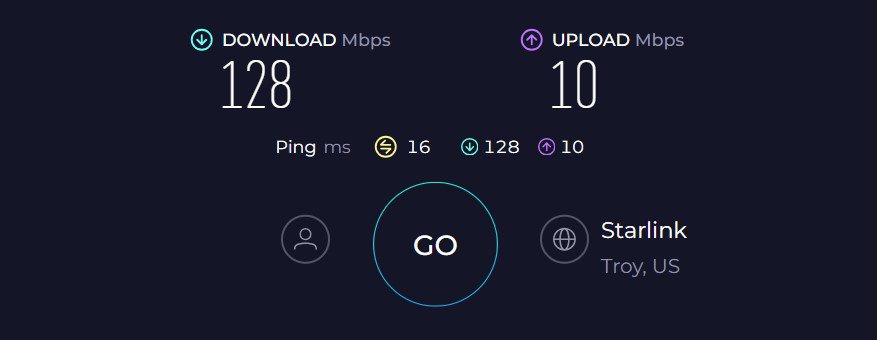
The A33 further instills a Gig Ethernet port for interference-free network input on your smart devices. It allowed me to play Fortnite with my friends without getting kicked out of the lobby.
Conclusion
Tenda A33 is a budget-friendly dual-band WiFi extender that you can use with Starlink. There are some visible lags in the network, but technologies like MU-MIMO ensure you can stream your favorite shows and movies in high resolution.
Pros
- Wi-Fi 6 support
- Budget-friendly
- Decent coverage
- Easy to set up
- MU-MIMO assists in streams
Cons
- Minor network inconsistencies and lags
7. Best Budget Option: Netgear EX6120

- Wireless Standard: Wi-Fi 5 (802.11ac)
- WiFi Range: Up to 1,500 Sq Ft
- Number of Devices: Up to 25
- Ports: 1 x Gig Ethernet
- App Support: Yes
Lastly, presenting you with a cheap yet reliable option for your Starlink Internet. Netgear EX6120 has Wi-Fi 5, decent throughput capacity, and coverage to draw curtains on your internet-driven tasks.
Why is it a suitable choice?
Connected to a Starlink plan and a decent router, the maximum this device can cover is around 1,300 Sq Ft. I tested it with my staple Netgear RAX54S and combined it with its 2,300 Sq Ft range; my entire 3,700 Sq Ft house was enveloped with decent signals.
I attended a video call over Zoom, separated by three walls, and the voice & video quality was perceivable, as I could jot down all the points covered in the meeting. Barring its decent coverage, the device exhibited a decent device handling capacity.
Despite lacking key networking technologies like beamforming and MU-MIMO, it could connect up to 20 devices simultaneously. Using the Netgear WiFi analyzer app, you can track the devices consuming your network and remove any if they are usurping a major chunk of the network.
Speeds & Connectivity
This Wi-Fi 5 dual-band router boasts an aggregated speed of 1200 Mbps. It's divided into its dual-band setup as follows:
| 5 GHz: 900 Mbps | 2.4 GHz: 300 Mbps |
So, it's a good choice for Starlink Roam users. The maximum download and upload speeds were recorded at 108 Mbps and 8 Mbps, respectively.
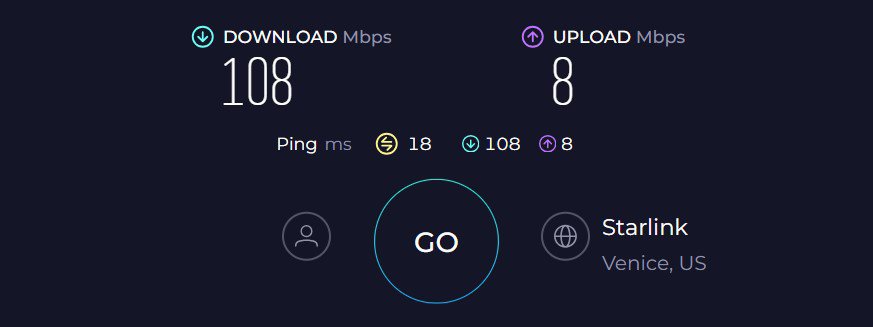
This might not seem much compared to my previous recommendations, but still, tasks like browsing social media, sending emails, streaming HD music, and others should be a walk in the park.
You can even stream HD videos on YouTube and Netflix with occasional lags and buffering.
Conclusion
Netgear EX6120 is a good affordable extender to consider. It provides good coverage and throughput, but its performance should fare well in any house. The tests turned out fine, but there were occasional lags and latencies over the connected devices, primarily because MU-MIMO was absent.
Pros
- Connects up to 20 devices
- Throughput is good
- Easy to install and use
- Compact design
Cons
- No MU-MIMO
Frequently Asked Questions
There's no specific requirement for WiFi extenders to work with Starlink. You can buy any, and it should work. However, make sure the one you select has a coverage range capacity to cover all your WiFi dead spots, has good speed capacity, and has decent wireless standards.
Follow the below steps:
– Find an optimal location
– Download and install the Starlink app on your smartphone
– Pair the extender to the network by entering the Pair tab
– Once pairing is done, and an indicator light on the extender turns on, you are ready to use the internet over a large area.
No, powerline adapters and wireless extenders both are different devices. The former uses electrical wiring to create a network, while the latter connects wirelessly. At the same time, WiFi extenders and boosters are the same.
They're not as good as mesh systems as they cut the speed and break the connectivity. However, they are still a good option, especially on a budget.
Verdict
I hope this review-based guide helped you pick an ideal extender for your Starlink connection. But if you're still confused, here are my suggestions per different use cases or preferences:
- If you need a long WiFi range, TP-Link RE550 is your best bet. It boasts maximum coverage and works well with bandwidth-intensive tasks.
- If you need one for gaming or streaming, the Asus RP-AX58 is the one to pick.
- Lastly, the Netgear EX5100 is the most cost-effective yet dependable choice.
That's all for now, thanks for reading!





